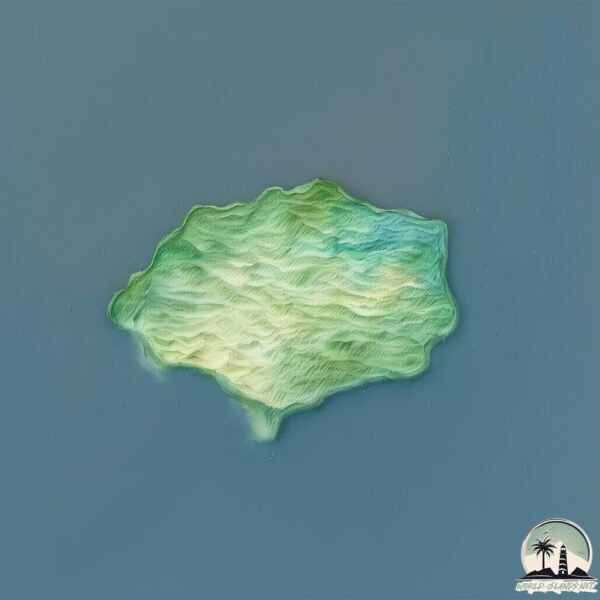Ostrov Chirinkotan

Welcome to Ostrov Chirinkotan, a Polar island in the Sea of Okhotsk, part of the majestic Pacific Ocean. This guide offers a comprehensive overview of what makes Ostrov Chirinkotan unique – from its geography and climate to its population, infrastructure, and beyond. Dive into the details:
- Geography and Size: Explore the island’s size and location.
- Climate and Weather: Weather patterns and temperature.
- Topography and Nature: Uncover the natural wonders of the island.
- Infrastructure and Travelling: Insights on reaching, staying, and making the most of your visit.
- News and Headlines: Latest News.
Geography and size of Ostrov Chirinkotan
Size: 5.868 km²
Coastline: 13.8 km
Ocean: Pacific Ocean
Sea: Sea of Okhotsk
Continent: Asia
Ostrov Chirinkotan is a Small Island spanning 5.9 km² with a coastline of 13.8 km.
Archipel: Kuril Islands – A volcanic archipelago stretching from Japan to Russia, known for their rugged landscapes and abundant marine life.
Tectonic Plate: North America – Covers North America and parts of the Atlantic and Arctic Oceans, characterized by diverse geological features and varying levels of seismic activity.
The geographic heart of the island is pinpointed at these coordinates:
Latitude: 48.98022377 / Longitude: 153.48706652
Climate and weather of Ostrov Chirinkotan
Climate Zone: Polar
Climate Details: Tundra
Temperature: Cold
Climate Characteristics: The tundra climate features long, extremely cold winters and short, cool summers. Vegetation is limited to mosses, lichens, and small shrubs due to the low temperatures and short growing seasons. Biodiversity is low, but some specialized species thrive.
Topography and nature of Ostrov Chirinkotan
Timezone: UTC+12:00
Timezone places: Asia/Kamchatka
Max. Elevation: 520 m
Mean Elevation: 210 m
Vegetation: Open Woodland
Tree Coverage: 85%
The mean elevation is 210 m. The highest elevation on the island reaches approximately 520 meters above sea level. The island is characterized by Plateau: Elevated flatlands rising sharply above the surrounding area, with a maximum elevation over 500 meters but a mean elevation less than 300 meters, forming unique highland areas on islands.
Dominating Vegetation: Open Woodland
Characterized by sparsely distributed trees with open canopy allowing sunlight to penetrate, supporting grasses and shrubs underneath. Often found in drier or transitional environments. Ostrov Chirinkotan has a tree cover of 85 %.
Vegetation: 6 vegetation zones – Very Highly Diverse Island
Islands in this range are ecological powerhouses, showcasing a wide array of vegetation zones. Each zone, from lush rainforests to arid scrublands, coastal mangroves to mountainous regions, contributes to a complex and interdependent ecosystem. These islands are often hotspots of biodiversity, supporting numerous species and intricate ecological processes.
Infrastructure and Travelling to Ostrov Chirinkotan
Does the island have a public airport? no.
There is no public and scheduled airport on Ostrov Chirinkotan. The nearest airport is Avachinskiy Heliport, located 713 km away.
Does the island have a major port? no.
There are no major ports on Ostrov Chirinkotan. The closest major port is PETROPAVLOVSK, approximately 728 km away.
The mean population of Ostrov Chirinkotan is 1 per km². Ostrov Chirinkotan is Uninhabited. The island belongs to Russia.
Continuing your journey, Ostrov Ekarma is the next notable island, situated merely km away.
Russia is classified as Emerging region: BRIC: Brazil, Russia, India, and China – Economies noted for their rapid growth and increasing influence on global affairs. The level of income is Upper middle income.
News – Latest Updates and Headlines from Ostrov Chirinkotan
Stay informed with the most recent news and important headlines from Ostrov Chirinkotan. Here’s a roundup of the latest developments.
Please note: The data used here has been primarily extracted from satellite readings. Deviations from exact values may occur, particularly regarding the height of elevations and population density. Land area and coastline measurements refer to average values at mean high tide.
